For an exhibition at Chester Cathedral this suggests the Cathedral Imp. High in the Nave, its story is that when the abbey was being built, a workman thought he saw the devil, so the Imp was carved with a stone chain to tether the devil to the building where it could do no harm.
"I then imagined that the imp was taking time off to play hide and seek with one of the grotesque figures from the Cathedral. "
Cathedral Guardians at Play; Hide & Seek
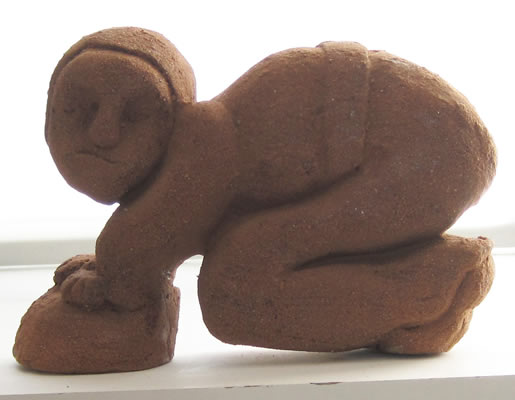
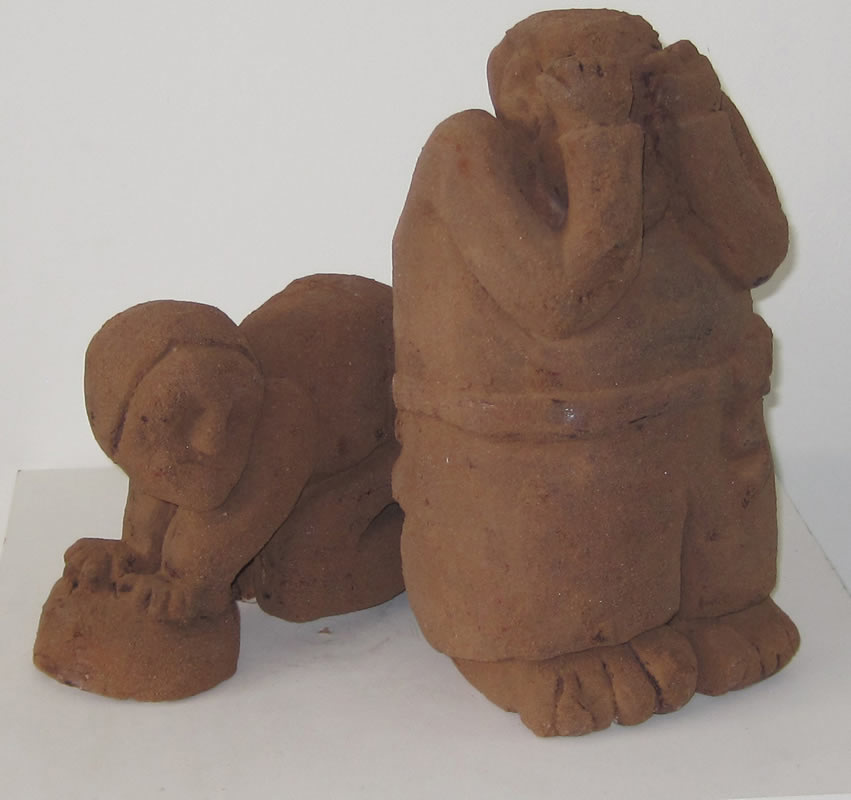
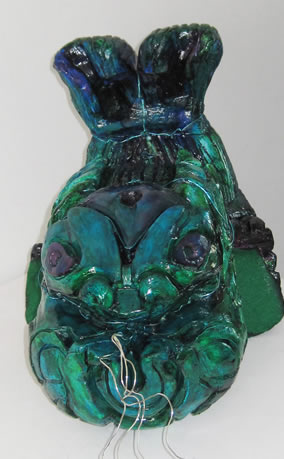
The other piece of work for the Cathedral is Sea Monster; a gargoyle which sits on the top of an exhibition board. It is painted to reflect the colours of the stained glass
Reflective Sea Monster Gargoyle

Twisted Form
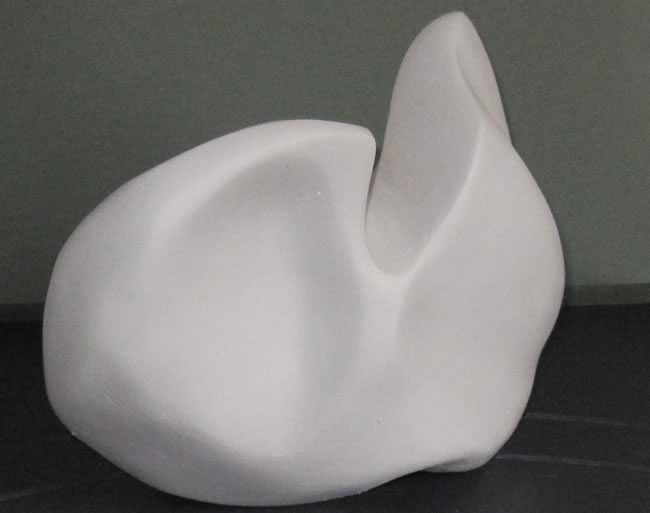
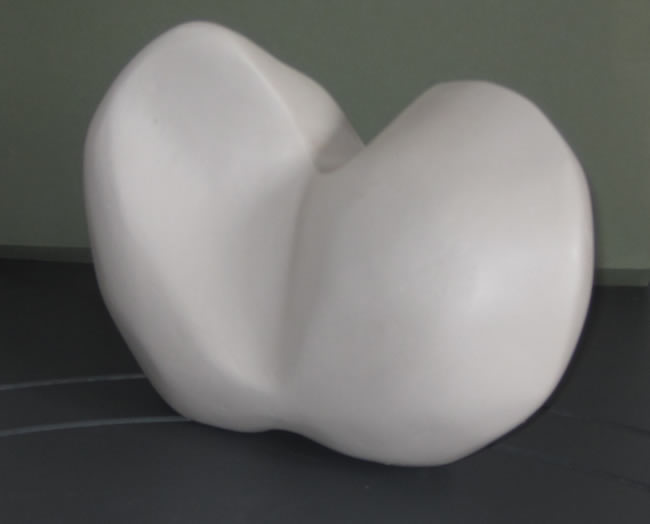
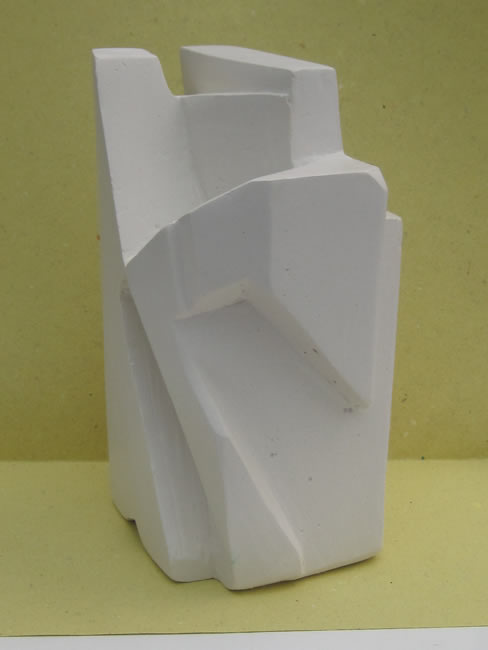
Rock Form
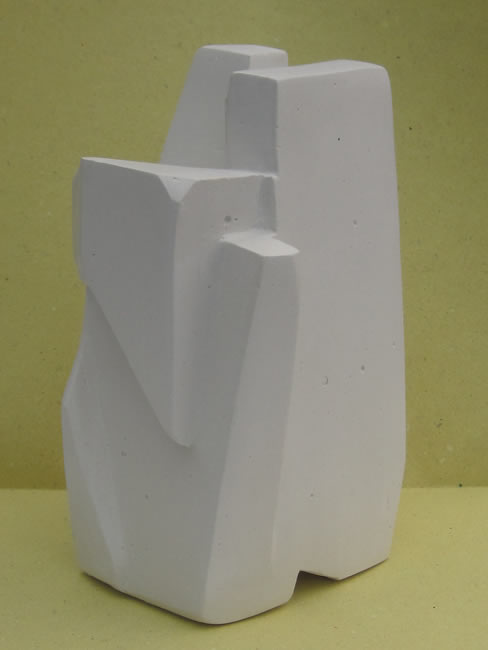
 small.jpg)
Cave Figure
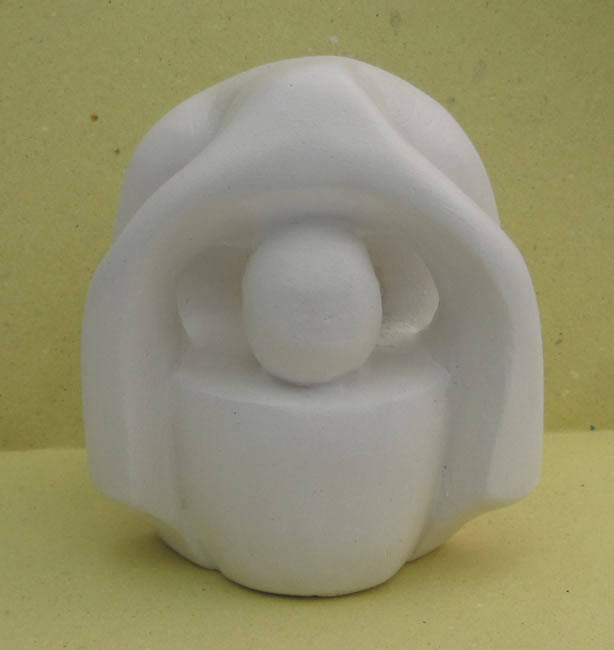
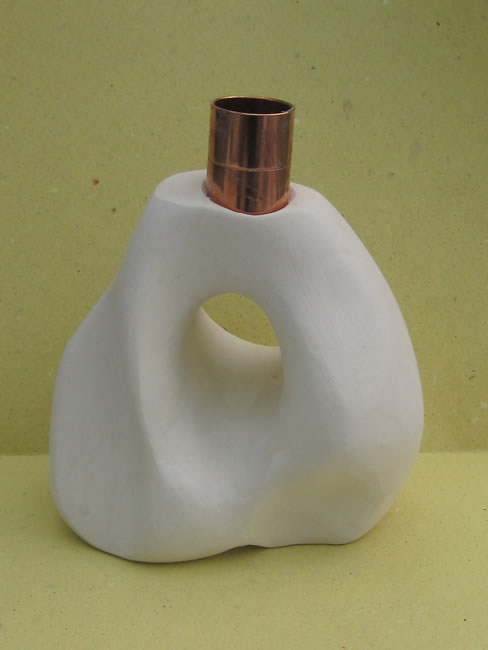
Pierced Form
Plaster and Copper
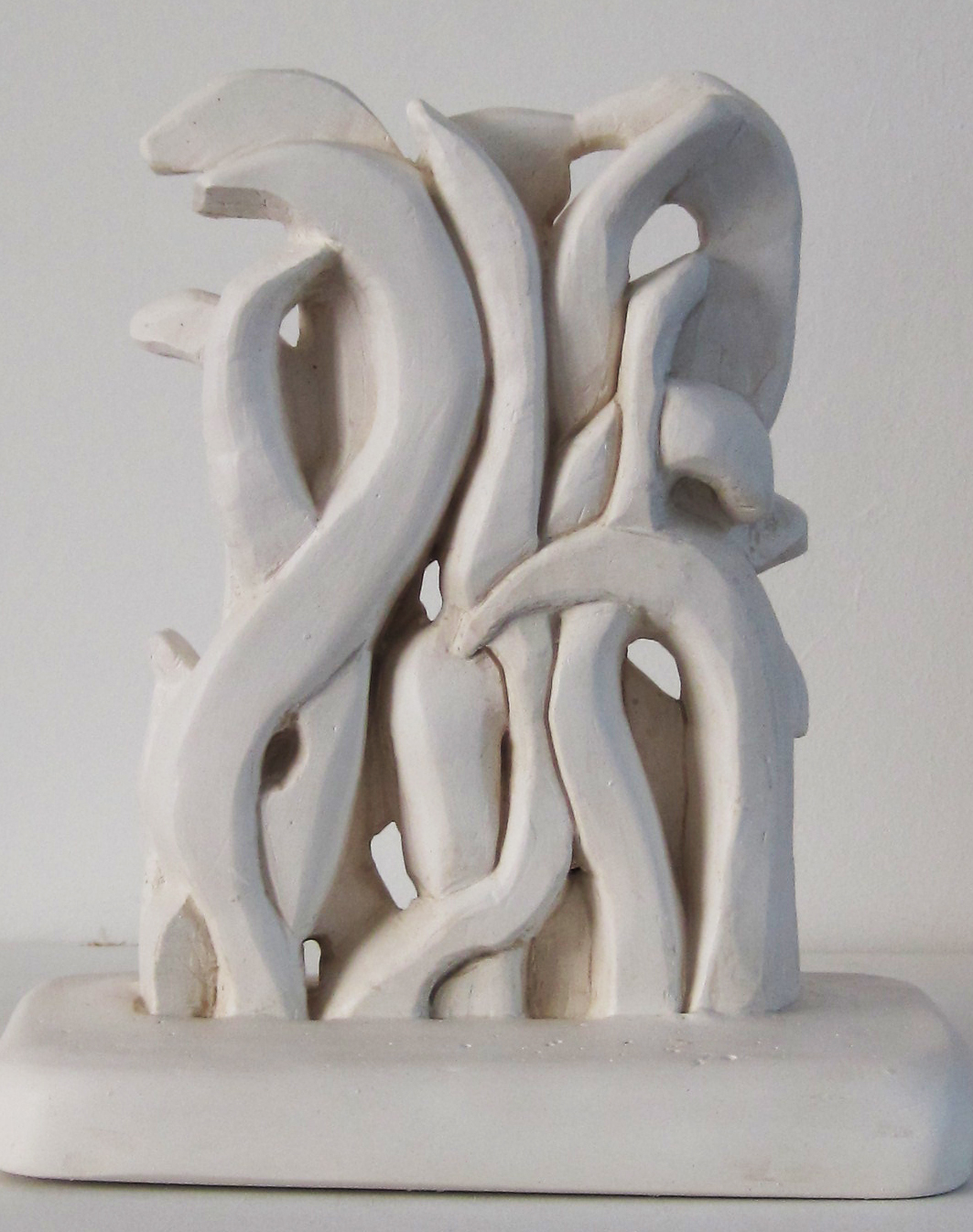

Ferns
Wind Swimmer
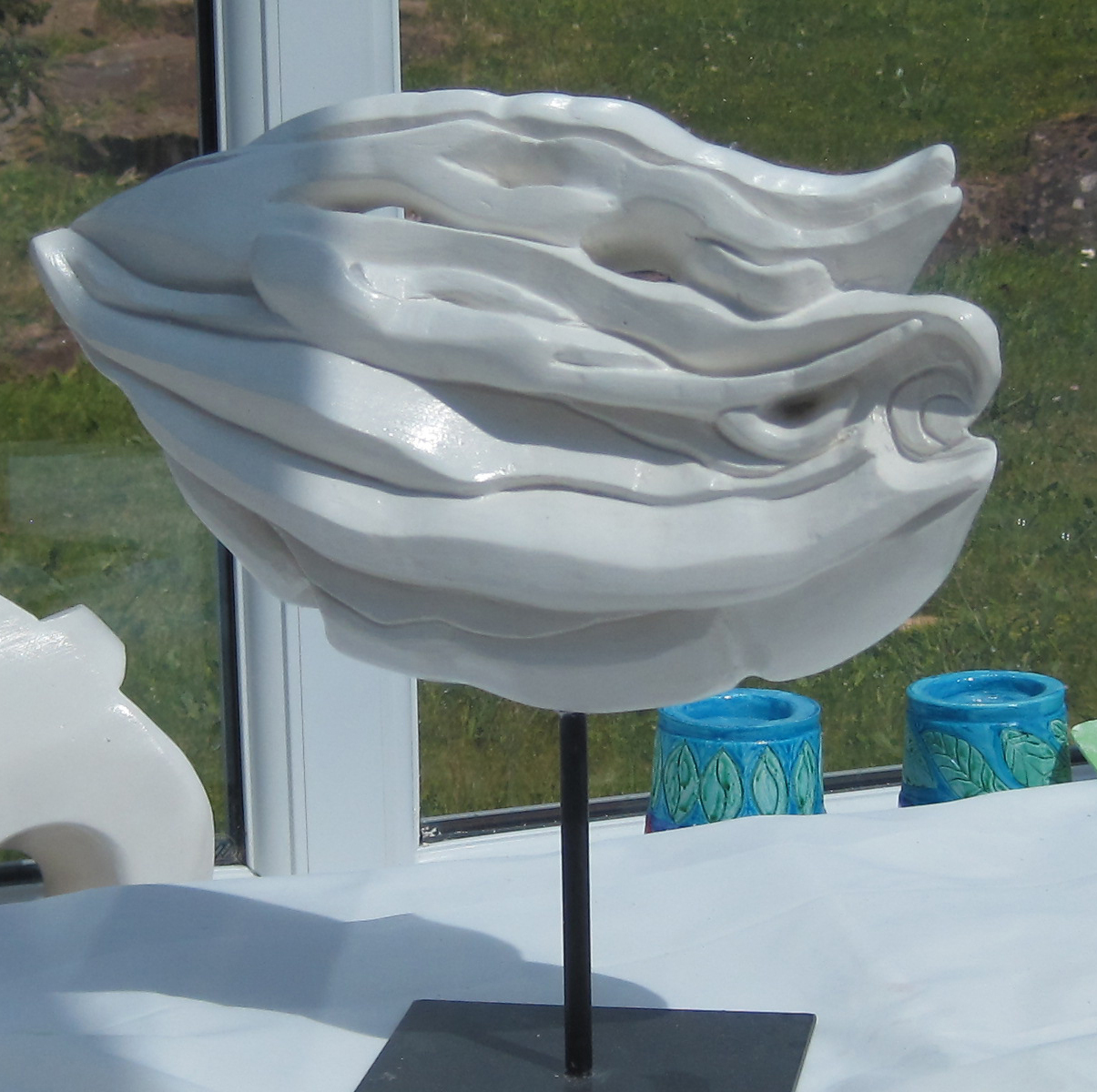
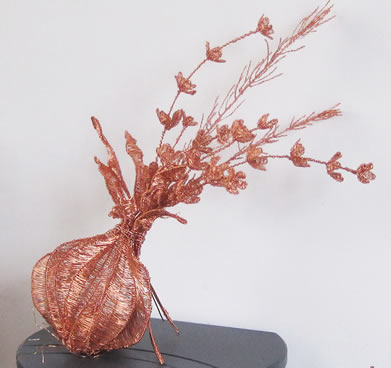
Healing Herbs (Garlic, Rosemary and Thyme)
Copper
This is constructed from copper wire of different thicknesses using a basic weaving method.
Herbs were widely used for medicines in WW1, both for wound healing and illnesses associated with the damp conditions.
As part of Cheshire Artists Network, Sandra was involved in an eighteen month project, funded by Arts Council England, which exhibited art based on a commemoration of those involved in World War 1.
Three bodies of work toured Cheshire and nearby places since January 2014, and at Chester Cathedral January / February 2015. The project finished at the end of May 2015 with the last exhibition in the Amber Bedroom at Tatton Park, Knutsford.
The following images are of work on this theme.
Gertrude Jekyll (1843 -1942) was an artist, writer, garden designer and horticulturalist, planning gardens in the Arts & Crafts style.
During WW1 she gave part of her estate in Berkshire over to growing Corn Marigolds. The flowers and leaves were processed and sent to The Front for use in wound poultices.
Homage to Gertrude Jekyll
Copper
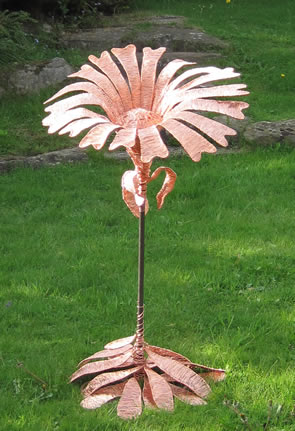

Conflict and Reconciliation
Copper and Willow
Sandra Christie & Caroline Gregson
"We both made torsos in our own materials,then swapped and worked on each others"
Two people, joined together in conflict being careful not to look each other in the eye, for fear of seeing brotherhood. A collaboration in accepting orders. Agressive intervention turned into an exchange of personal support. Remembrance of two ordinary men.
Glory Days
Copper, rubberised coating, painted found wood,
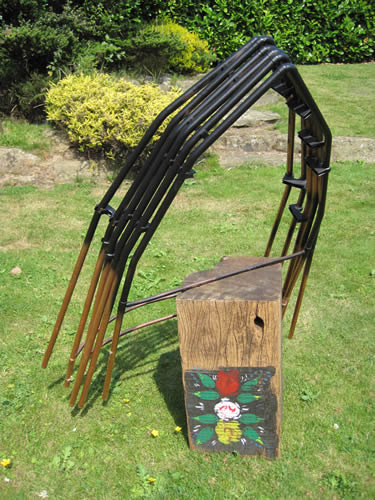
This was made for an exhibition celebrating the historic culture of the inland waterways. The rubberised copper represents the skeletised front of a narrowboat, and is resting on a representation of part of a lock gate. This has been painted to resemble a worn image typical of narrowboat and canal art.